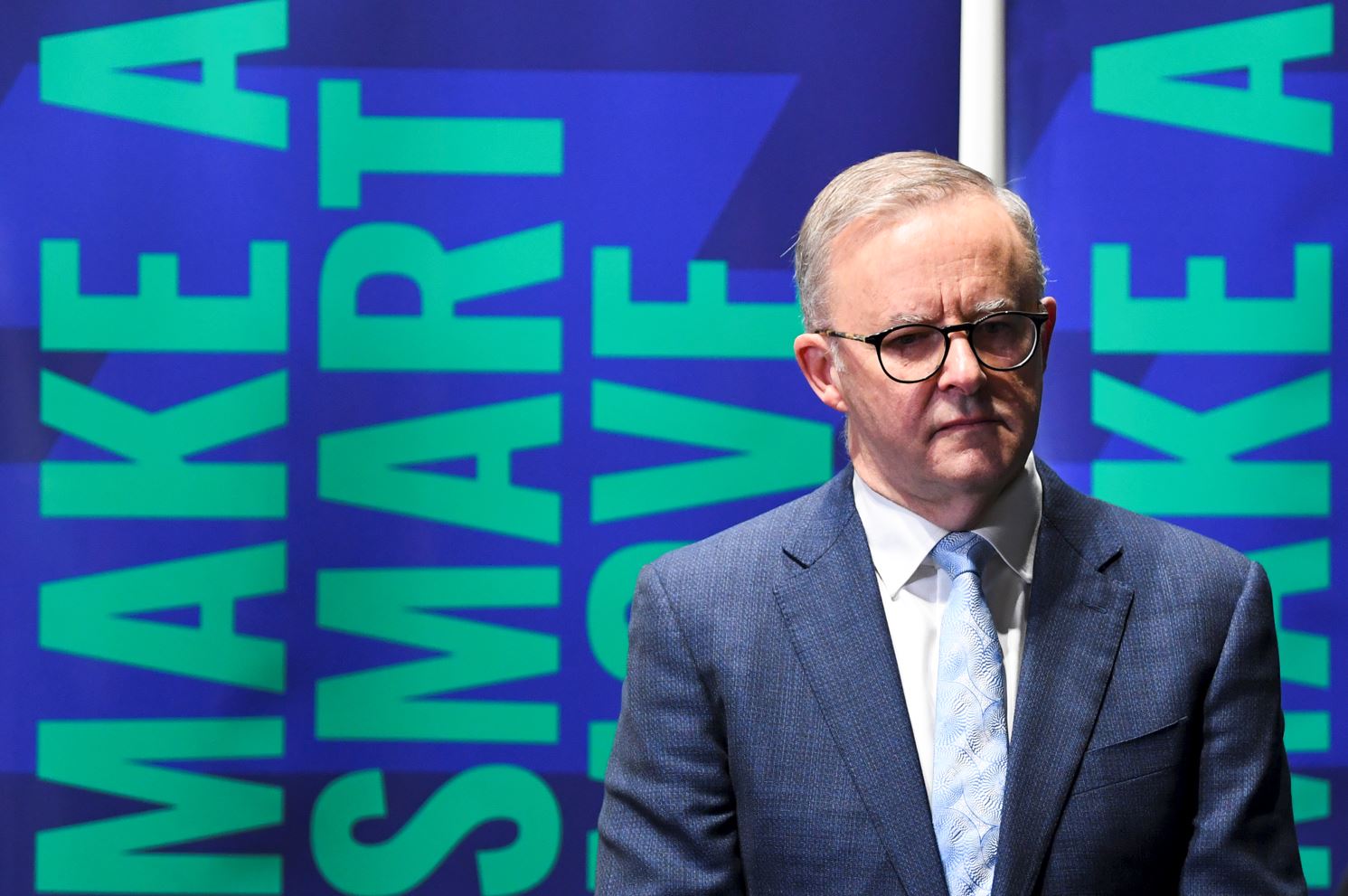A third jurisdiction signing on to the public school funding boost is probably not what politicians in the more populous states, who are holding out for a better deal, wanted to hear.
Tasmania’s public schools will be fully funded by 2029 after the Rockliff State Government accepted the Commonwealth’s new education agreement.
The Federal Government will lift its commitment to 22.5 per cent of the SRS, while Tasmania will fund the remaining 77.5 per cent.
The ACT is the only jurisdiction where public schools are completely funded, however Prime Minister Anthony Albanese said the Tasmania announcement is a stepping stone to change.
“I want to make sure that every student in Australia, no matter where they live and learn, receives every opportunity,” he said.
“This is a national priority that can only be delivered when the Commonwealth and state and territory governments work in partnership.”
AEU federal president Correna Haythorpe said the underfunding of public schools in Tasmania will amount to $259.8 million over a five-year period between 2024 and 2028, and lock in inequality for public schools, students and their families across the next decade.
“This comes from the State Government’s use of the “4 per cent additional allowance” on capital depreciation, regulatory bodies and other non-school based costs, which are costs never intended to be covered from the SRS.
“This accounting trick will deny public schools up to $1,062 per year per student by 2029,” Haythorpe said.
BREAKING: Today we’ll sign an agreement to fully fund all Tassie public schools.
— Jason Clare MP (@JasonClareMP) September 24, 2024
David Genford, president of AEU Tasmania, said unless 100 per cent of the SRS is spent on schools, the State and Federal Governments cannot truthfully say that they have funded Tasmanian schools according to Gonski principles.
“The failure to deliver even the bare minimum funding required to educate most Tasmanian kids to the minimum standard is not a winning announcement. It is an abject failure of the Government,” Genford said.
“This is a cloak-and-dagger deal that will rob this generation of Tasmanian children of the education funding they need.”
Tasmanian educators in August rejected Clare’s funding ultimatum, and at the time renewed demands that the Federal Government fully fund the state's public schools.
“If the Albanese Government are actually serious about improving education outcomes, they need to come to the table with a funding deal for Tasmania that is similar to the Northern Territory’s,” AEU Tasmania state manager Brian Wightman said at the time.
“While the NT have received a special intervention with the Federal Government increasing their contribution to 40 per cent, Tasmanian students face similar levels of disadvantage and barriers to NT students – the highest levels of disadvantage of any state.”
Though Tasmania, WA and the NT have signed on, every other jurisdiction has urged the Albanese Government to further lift its contribution to 25 per cent.
If the hold-outs don’t accept the offer before the end of September, the current deal will roll over and the Federal Government’s funding will stay at 20 per cent of the Schooling Resource Standard, while the states’ contribution remains at 75 per cent – maintaining a five per cent shortfall.
Save Our Schools national convenor Trevor Cobbold said on Friday that if this were to be the case, public schools potentially stand to lose nearly $30 billion in funding over the next five years, a situation he said will be “catastrophic”.
“Schools in NSW would miss out on $8.7 billion, those in Victoria and Queensland $8.4 billion and $2 billion in South Australia,” Cobbold said.
Public schools, he said, will lose in three ways if the states don’t sign.

Correna Haythorpe says the new deal “will see Tasmanian schools, students and families miss out on almost $260 million for additional teachers, education support staff and individual support for children who most need it, whether they are excelling or trying to catch up.”
“First, the Commonwealth offer to increase its share of funding public schools to 22.5 per cent of the SRS will be denied to the non-signatory states. Public schools will lose about $6.6 billion in funding over 2025-2029 inclusive as a result.
“Second, the refusal states will not have to increase their share of funding public schools to77.5 per cent of their SRS. They will only have to transition to the 75 per cent target in the existing agreements by due dates that range from 2027 for NSW and Tasmania to 2032 for Queensland. Public schools will be under-funded by $7.8 billion over the period."
Thirdly, Cobbold claimed, the states will be able to continue to claim expenditures excluded from how the SRS is measured as part of their share of funding public schools.
“They can claim expenditures on capital depreciation and school transport up to 4 per cent of their SRS share. They can also claim all expenditures on regulatory authorities such as curriculum bodies. These accounting tricks will deny public schools $13.7 billion in funding over the next five years.”
Cobbold said a simple compromise would resolve the issue and ensure that public schools are genuinely fully funded by 2029.
NSW Deputy Premier and Education Minister Prue Car has previously said her state cannot roll out critical interventions at scale without more funding.
Her Victorian counterpart Ben Carroll in mid-September said he would reject the Commonwealth’s offer and has hit out at its refusal to grow public school funding when it supports private schools to 80 per cent of the Schooling Resource Standard.
(with AAP)














